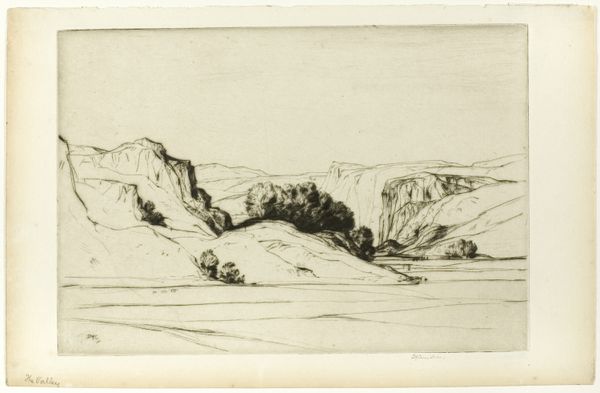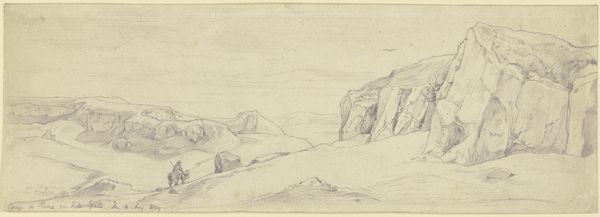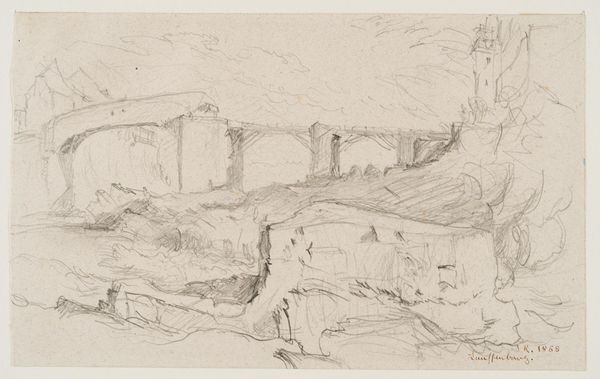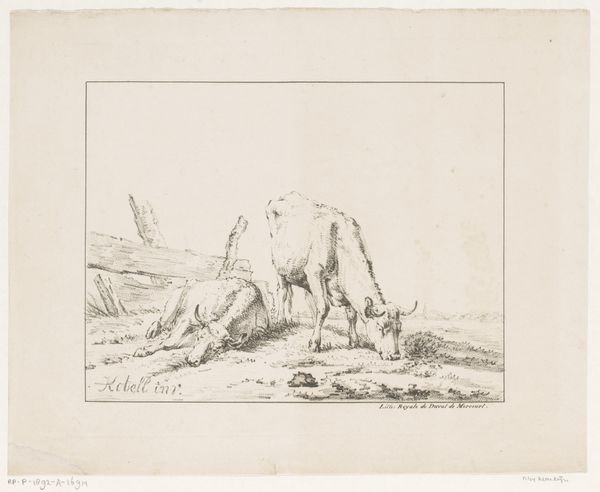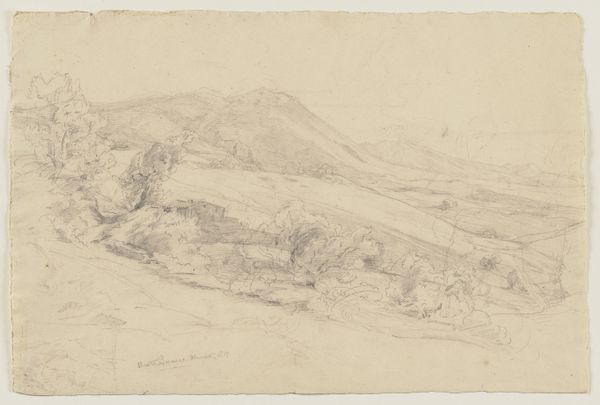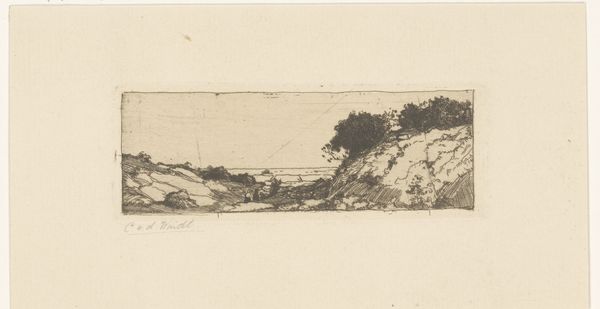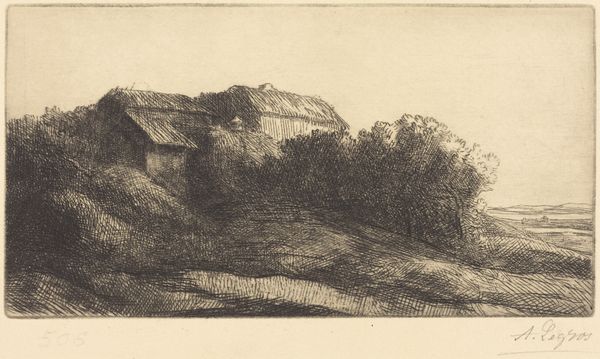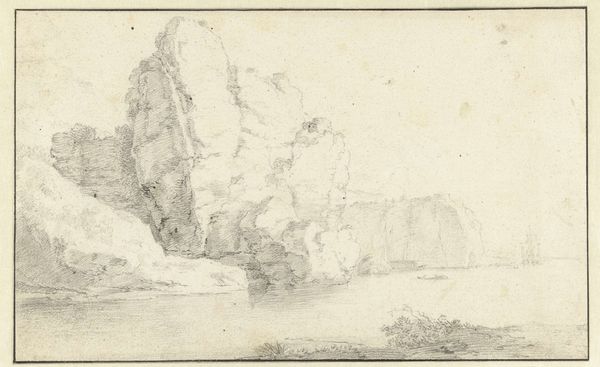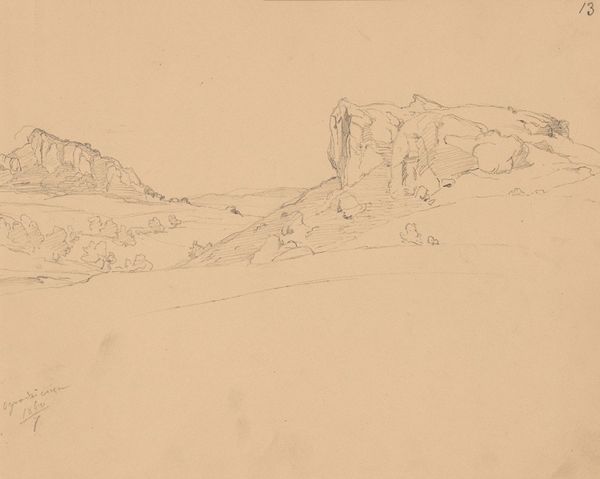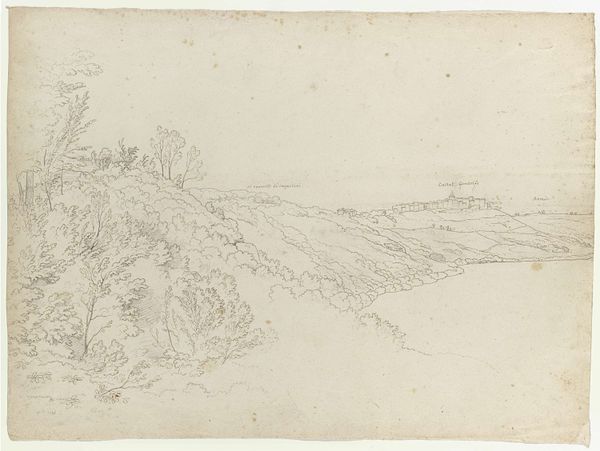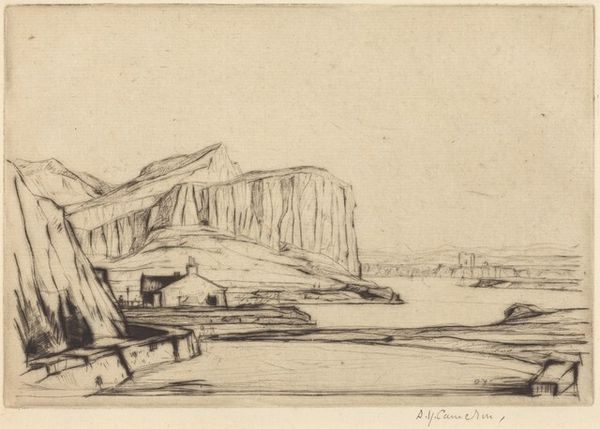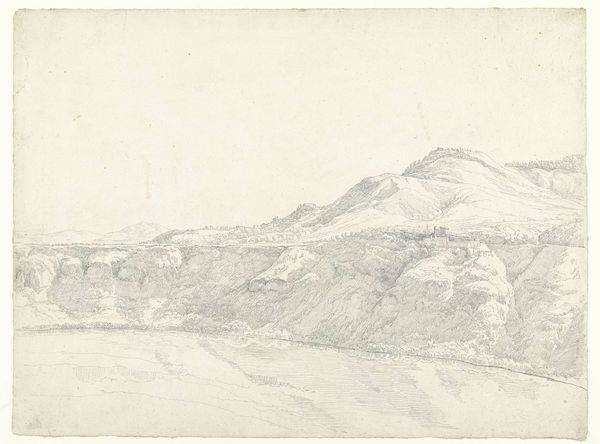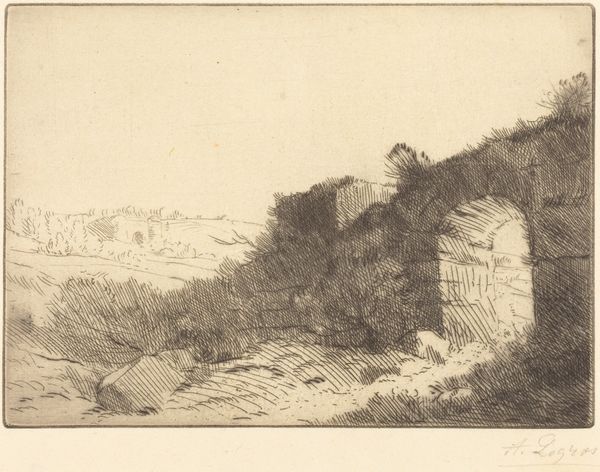
print, etching
# print
#
etching
#
landscape
#
geometric
#
realism
Copyright: National Gallery of Art: CC0 1.0
Curator: This is David Young Cameron’s etching, “The Valley,” sometimes referred to as “Glencrutten,” created in 1914. What is your first impression? Editor: Austere. There’s a starkness in this landscape, a quiet desolation communicated through its muted tones. The land seems almost skeletal. Curator: Yes, Cameron utilizes etching to create a very economical composition. Note the skillful use of line, and how he employs hatching and cross-hatching to establish depth and volume. Observe the geometric forms—the angularity of the cliffs contrasting with the soft curves of the hills. It is a study in contrasts. Editor: Those contrasts feel deliberate, playing with shadow and light to create an almost dreamlike space. This valley, then, feels like more than just a physical place, perhaps evoking a psychological state or memory. Those craggy peaks echo something primal. Curator: Precisely. There is an architectural quality even to the unbuilt spaces, something undeniably present even in its apparent emptiness. The composition creates its own sense of order through line, weight and perspective, don't you agree? Editor: I see figures near the center, seemingly dwarfed by the natural world. These humans add a symbolic weight, emphasizing the immensity of the landscape and our relative insignificance. This valley could be interpreted as a space for reflection, even solitude. It encourages meditation. Curator: And this print’s success stems from Cameron's control over the medium, his deft ability to articulate volume without overwhelming the scene with excessive detail, truly creating a landscape of symbolic and geometric nuance. Editor: An enduring image of the power and the emotional complexity held in landscapes. A space where geometric form and the quietness of nature invite contemplation. Curator: Indeed, its structure provides access to greater artistic and historic context through the formal qualities themselves. Editor: Leaving the viewer with something to ponder long after walking away.
Comments
No comments
Be the first to comment and join the conversation on the ultimate creative platform.
